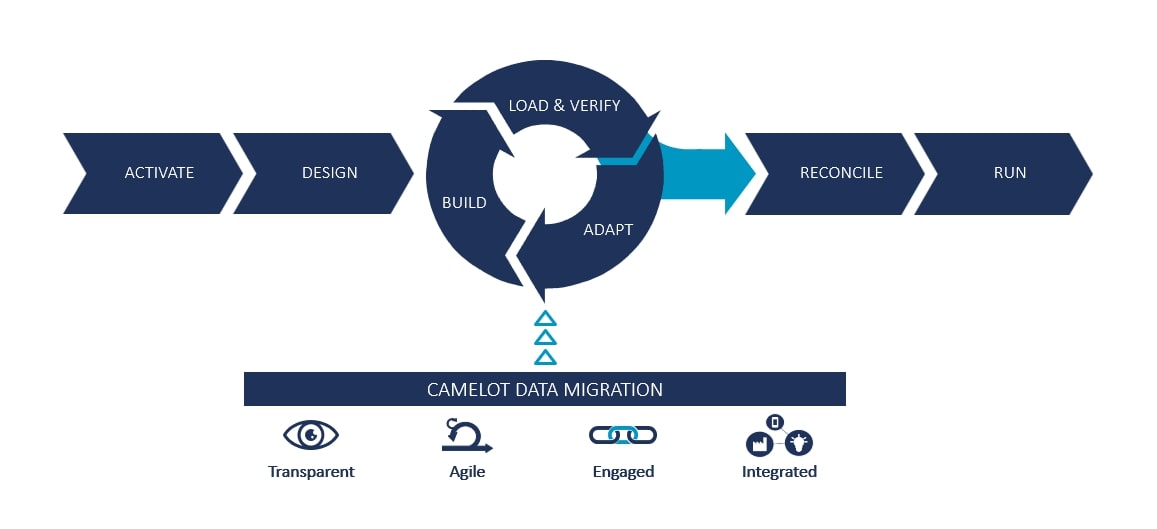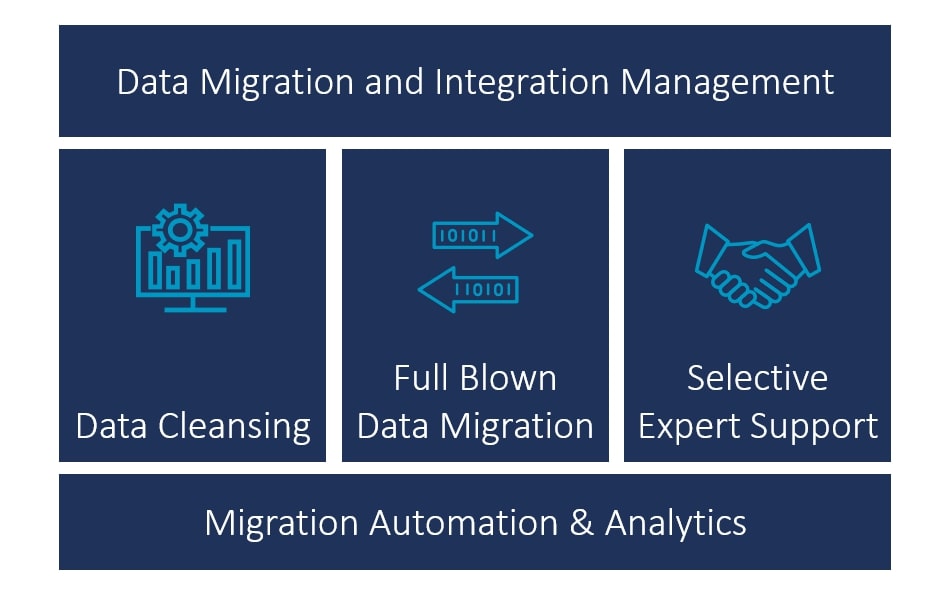
AI-Driven Application & Process Testing: Embracing Agentic Testing
Learn how Agentic AI enables digital transformation, delivering true hyperautomation.

Digital transformation is still one of the biggest topics for today’s economy and the goal of countless projects. It is an enabler for new business models and a requirement for every company that wants to stay competitive. The topic usually is characterized by high complexity and the involvement of numerous parties, especially when it comes to a S/4HANA transformation. Therefore, the success of a transformation project is decided by a variety of factors, and in most cases one of the crucial ones is data migration.
There are many reasons to conduct transformation projects and they usually aim for an improvement in business processes and their efficiency as well as cost reduction. A potential solution to achieve their goal is to implement a new system or to replace an existing one e.g., upgrading from SAP ECC to SAP S/4HANA. Transitioning to S/4HANA can be especially attractive in this regard since features like cloud capabilities and AI support reporting and promise a solid foundation for modern business processes.
In such an undertaking the system development and configuration are central tasks. But even the best system will not deliver the hoped-for result without one of the most valuable assets of today’s economy – data. Thus, making sure data is prepared and migrated properly from legacy sources into the new system is critical.
Is the scope for data migration set accordingly and will provide the desired outcome? What preparations are necessary to consolidate customer and vendor data to business partners for S/4HANA? Is existing data able to support the new business processes or are there data quality issues which need to be addressed beforehand?
These are just examples for the many questions and challenges which underline that it needs more than merely transferring records from system A to system B. To completely grasp the complexity of data migration it is important to see it as a process and understand all necessary actions. Underestimating data migration and corresponding tasks may increase project costs and in the worst case will lead to a heavy delay in the project timeline.
Often projects lack transparency and collaboration regarding data migration. Unclear responsibilities lead to incorrect or lacking information. Missing authorisations prevent the execution of necessary migration tasks and cause delays. To prevent these unnecessary issues, clear structures and responsibilities are needed. Making sure data migration is integrated well within the overlying project not only helps to keep the desired timeline but also reduces risk in general. The best time to incorporate data migration and a strong migration management into a project is early-on.
Planning and conception are the groundwork for a successful project and same goes for data migration. The availability of resources must be ensured and can only be done if the necessary expertise and human capital are known. Concise requirements for the specific data migration scenario must be determined as soon as possible and therefore all relevant parties must be involved. However, getting everyone at the table and collecting the required information is a challenge.
Are there dependencies which have to be aligned with system development? Will the current data quality influence the performance of the newly implemented system? Can migration tasks be tested and monitored with existing tools and systems? – Those are just some of the questions which need to be resolved during planning. Depending on the complexity of the project, involved data and systems, a high skill level is required to formulate a valid migration strategy. Without proper knowledge of data objects, dependencies and requirements it is impossible to define a clear scope and successfully execute a data migration. However, expertise alone is not enough, and a clear migration approach is mandatory for every data migration.

The Camelot Data Migration aims at maximizing transparency and minimizing risk throughout the migration process. Through activation of all involved parties the collection of crucial inputs and information is facilitated to create the best basis for the design phase. After the conception phase, the implementation and testing cycle can begin. Each iteration improves the migration jobs and programs through the validation of mock loads and once the implementation is finished productive loads can be executed. But even after the data migration to productive systems has been completed and validated during the reconcile phase, it is important to closely watch operations during the run phase. This assures that the system and corresponding data is working as designed.
While a well-defined approach is only the start, the list of tasks that require fulfillment is long. Data migration tools and their interfaces need to be implemented, programmed, and tested. The execution and validation of mock loads into development and test systems further help to guarantee a correct migration process. The planning of cut-over activities ensures a smooth transition for the go-live. But besides necessities there is also opportunity.
One factor has substantial influence on the migration result, the data itself. Assessing the current state of data quality as well as identifying data cleansing needs has great potential. Not only can it improve system efficiency but also the overall efficiency of business and decision processes. The preparation for data migration is an ideal time to implement data quality management and helps to provide the best possible data basis for the launch of a new system.
Form and structure of legacy data depend heavily on the source systems, and consolidating data of different systems into one poses a challenge, especially if the target and source structure are substantially different. An example would be the consolidation of customer and vendor data to business partner data for S/4HANA, a process which profits significantly from the support of data quality management.
The standardization and harmonization of data enables the definition of golden records which aids in matching of customer and vendor data to create business partners. Without this process it is indefinitely harder to create valid business partners which can be used operatively. Therefore, it is advisable to address data quality issues specifically in the context of an S/4HANA transformation.
As previously discussed, data migration is a process which not only requires a high level of competence but also transparency. Thorough integration of data migration into the project and a clear migration approach is needed as well as collaboration and the exchange of knowledge. Since there is no “one fits all” solution for data migration a custom fit is necessary when tackling the complexity of transformation projects, and S/4HANA transformations in particular. By considering these factors, a solid base can be provided to successfully migrate data.


Learn how Agentic AI enables digital transformation, delivering true hyperautomation.

Reimagine resilience and proactively minimize supply chain risks

This article shall help you to understand how to optimize your inventory positions in a month – or even less.

Modern PLM systems empower businesses to achieve product excellence in fast-paced markets by enhancing collaboration, agility and innovation.
© Camelot Management Consultants, Part of Accenture
Camelot Management Consultants is the brand name through which the member firms Camelot Management Consultants GmbH, Camelot ITLab GmbH and their local subsidiaries operate and deliver their services.